How to Chiffonade Basil
on Feb 08, 2019, Updated Sep 16, 2024
This post may contain affiliate links. Please read our disclosure policy.
Thin ribbons of basil are so easy to slice, and give all kinds of dishes a beautiful, restaurant-quality flair!
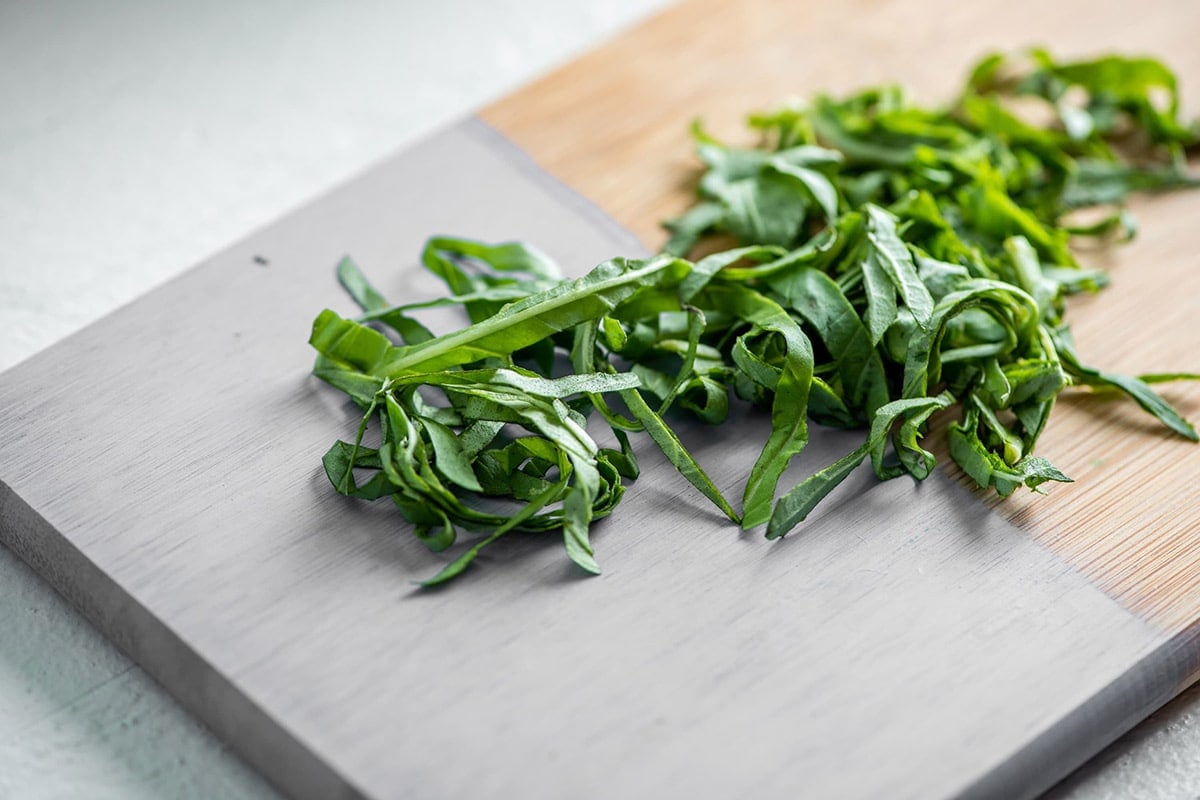
A shower of thinly sliced basil ribbons is beautiful in a recipe or sprinkled on top of a finished dish. And that’s what a basil chiffonade is! Cutting the basil into thin slivers is just as easy as chopping basil, but in many cases, just a bit prettier.
You can add chiffonaded basil to any dish that calls for chopped basil if you want to make it pop, especially if the basil is being used as a garnish. I like to use chiffonaded basil in everything from Tomato Bruschetta and Pasta with Fresh Heirloom Tomato Sauce to Mediterranean Couscous, Swiss Chard, and Peppers and Salmon Corn Chowder. I think it looks terrific sprinkled over soups and stews and crostini, and dishes like Chicken Milanese.
By signing up, you agree to our Privacy Policy.
Table of contents
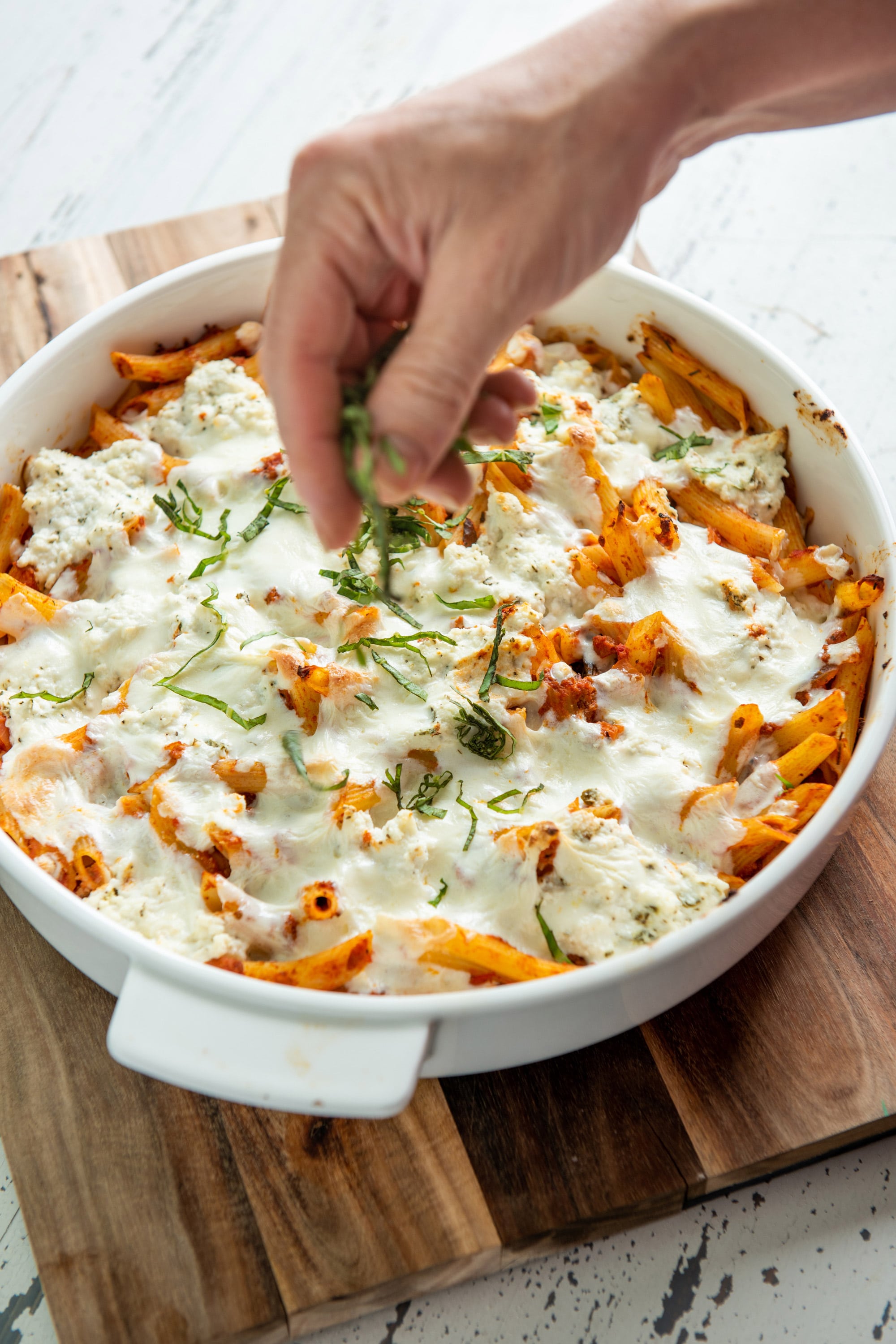
How to Chiffonade Basil: Everything you need to know about chiffonading basil and other herbs and lettuces — including what chiffonade means!
What Does “Chiffonade” Mean?
Well, I’m glad you asked — clearly, you didn’t get to this page by accident! Chiffonading means cutting thin strips of a flat leafy vegetable or larger leaf herb. It is a cutting technique that you can use with ingredients like lettuces and basil. It results in sliver-like curled strips that look very elegant when mixed into or strewn over various dishes. In French, the word roughly translates to “crumple” or “in rags.” In practice, though, a chiffonade looks a whole lot classier than that.
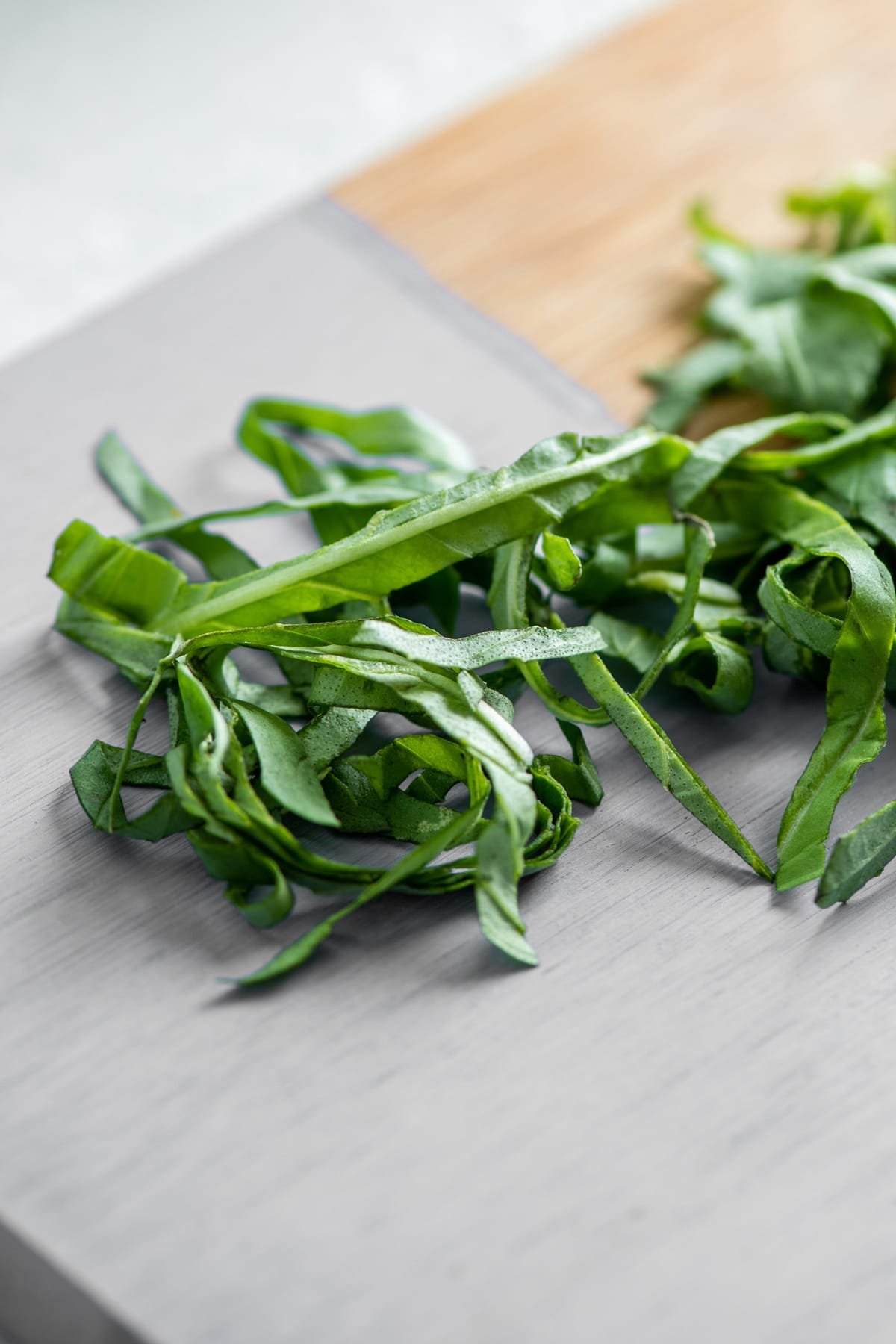
How Do You Chiffonade?
- Stack a few leaves of basil: Placing a few leaves of basil atop each other, stacking them up neatly.
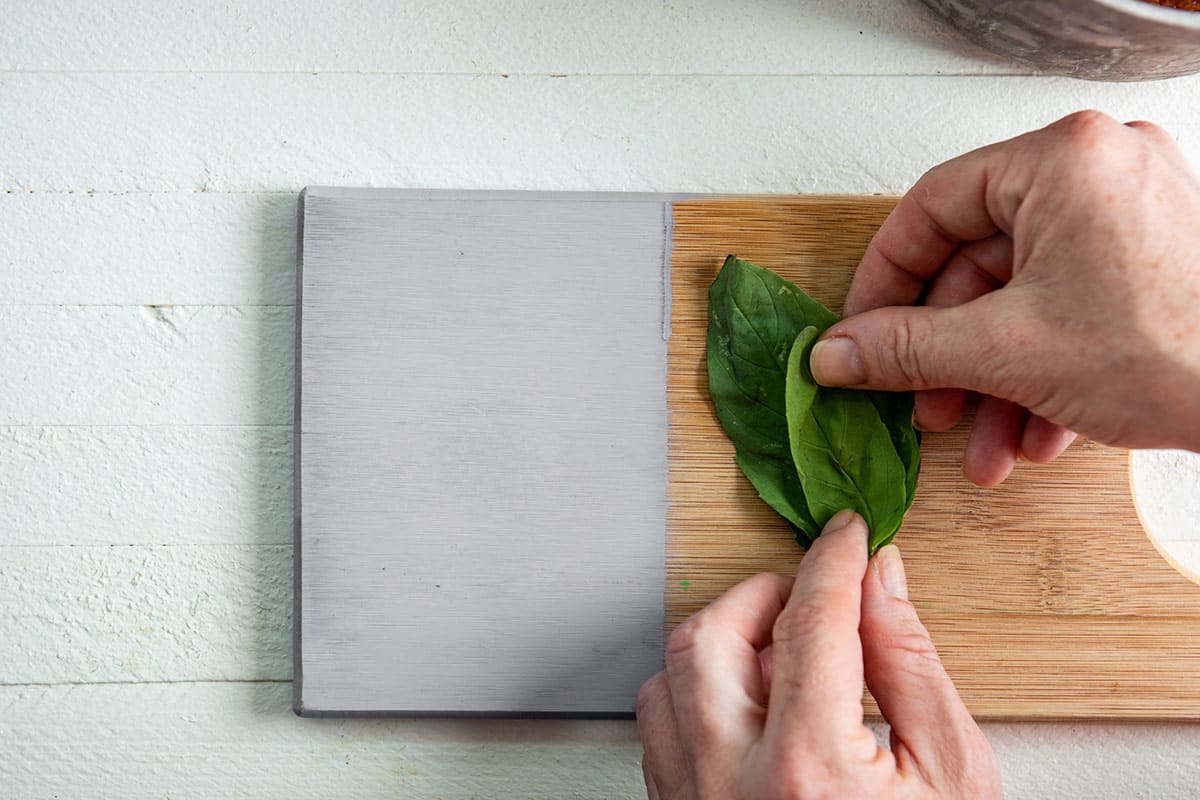
- Roll up the stacks into a tight cylinder: Then you roll up the little stack of leaves into a tight cylinder — you can roll it up from side to side, or from top to bottom, your choice. Top to bottom will yield longer strips, in the case of basil or any leaf that is taller than it is wide; side-to-side cuts will give you shorter, skinnier strips.
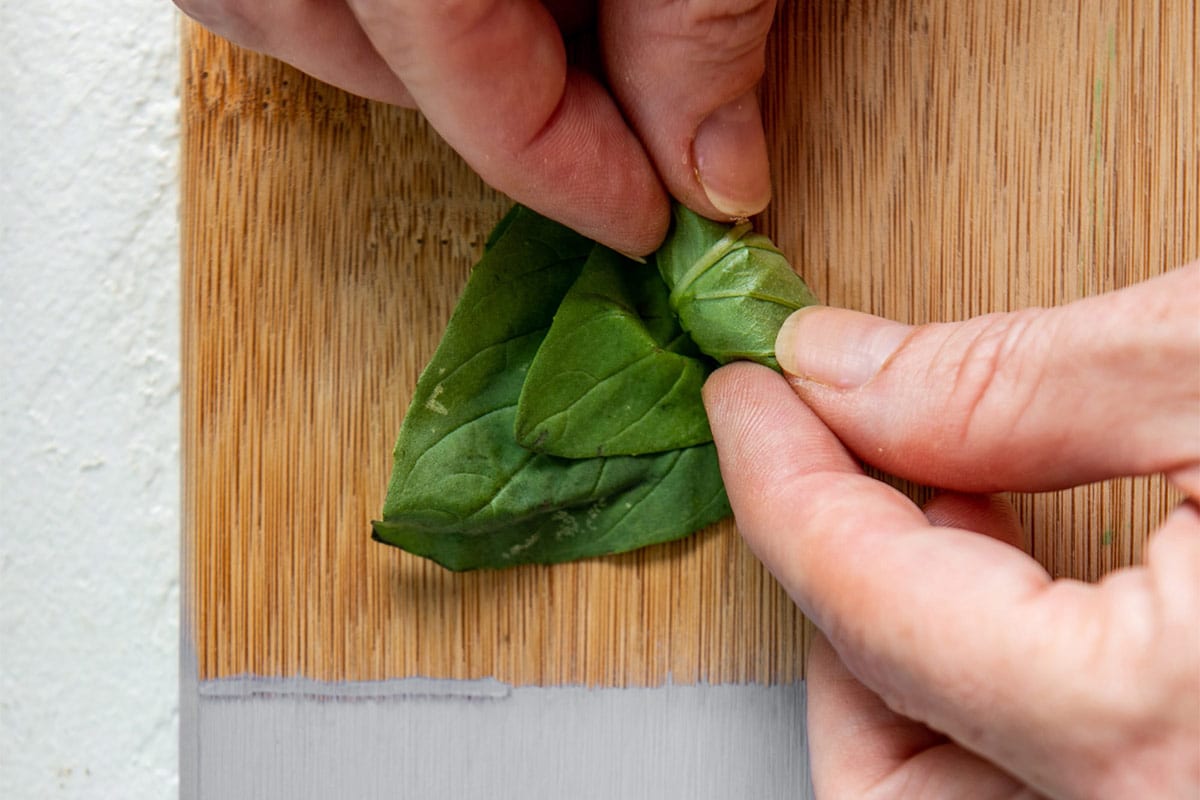
- Use a sharp knife to cut thin slices: Hold the cylinder with your non-cutting hand, and use a sharp knife to cut very thin slices of the cylinder crosswise.
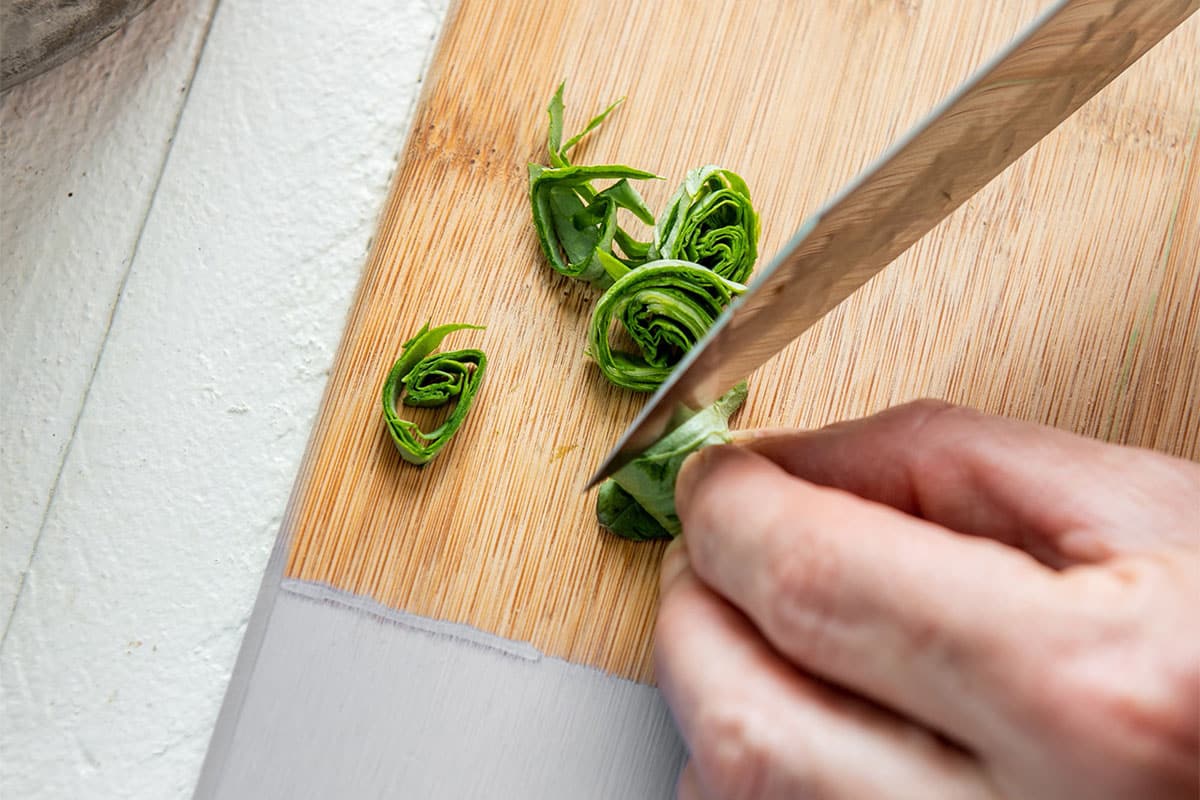
- Unfurl: When you are done cutting, use your fingers to gently pull apart and fluff the little pile of chiffonaded basil.
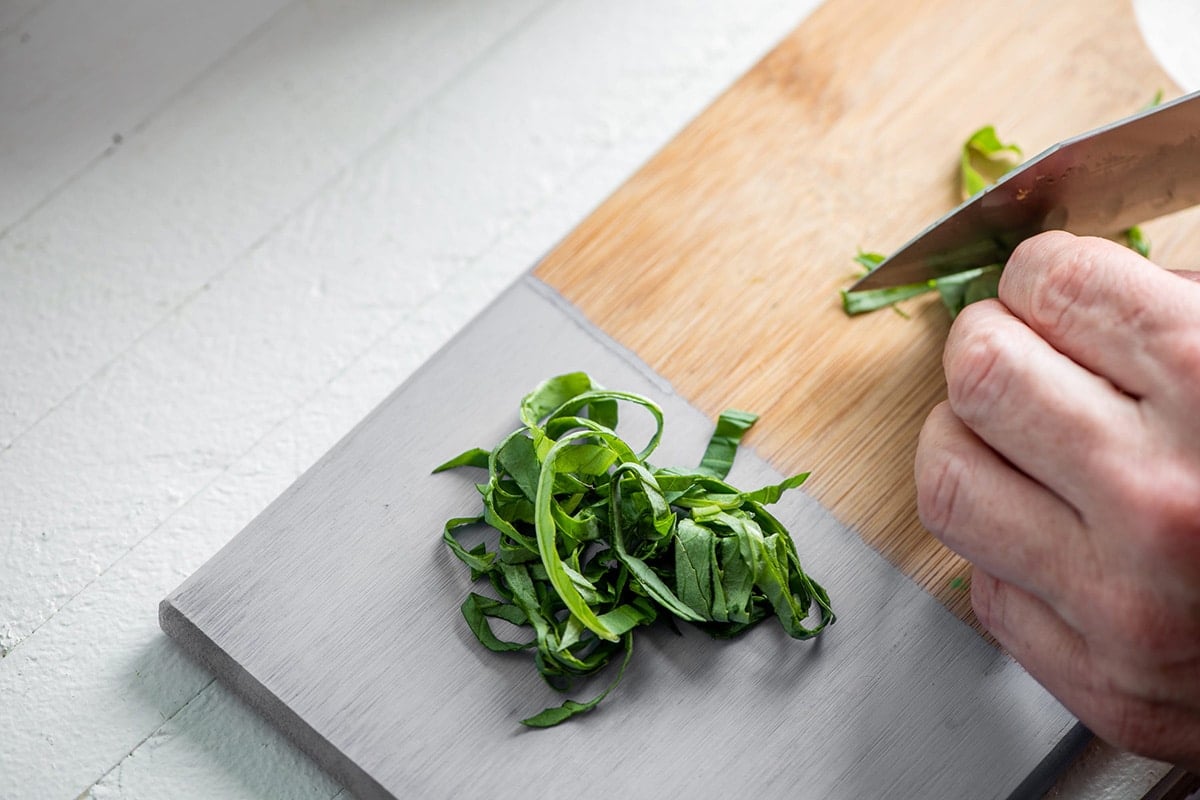
FAQs
To julienne vegetable is to cut them into very slender little sticks, like very thin matchsticks. This term is usually used with firmer vegetables, such as carrots, beets, or zucchini. To chiffonade is to cut very thin slivers or strips of a leafy vegetable. Occasionally you might see a recipe call for julienned basil, and basically, what the recipe writer is looking for is chiffonaded basil.
Basil and mint are the most common herbs that are cut with the chiffonade technique. That’s because they are large and flat, so easy to roll and slice. Smaller herbs are too tough to roll, but you could try it with other herbs like sage. (Sage has a much stronger flavor, so it’s unlikely you’ll want to strew a big pile of chiffonaded sage over a dish. But if you’re incorporating it into a sauce or a stew, that’s an option.) Some lettuces can also be chiffonaded, such as spinach, chard, sorrel, and arugula.
Not very far — it will start to brown and wilt quickly, so it’s best to cut it just before using. The same goes for delicate lettuces like butter or Boston lettuce. Things like chard can be cut this way further ahead of time, especially if they are going to be used in a cooked dish.
Shiff-a-nod! (“Chiff” rhymes with “sniff” and starts with the “sh” sound, if that helps.)
Chiffonading Tips
- Make sure that you use the sharpest knife in your arsenal. A dull knife will crush and bruise the leaves that you’re working with.
- It’s a good idea to try and hold the basil still with your fingernails and curl your fingers away from the knife as you cut to avoid nicking your fingertips since you are cutting super thin slices, and the cylinder will be pretty small.

How to Use Chiffonaded Basil
Pin this now to find it later
Pin It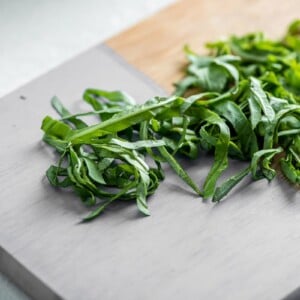
How to Chiffonade Basil
Equipment
Ingredients
- 1 bunch fresh basil leaves
Instructions
- To chiffonade basil (or anything else) you simply place a few leaves of basil one atop each other, stacking them up neatly.
- Roll up the little stack of leaves into a tight cylinder — you can roll it up from side-to-side, or from top to bottom, your choice. Top to bottom will yield longer strips, in the case of basil or any leaf that is taller than it is wide. Side-to-side will give you shorter skinny strips.
- Hold the cylinder and use a sharp knife to cut thin slices. Hold the cylinder with your non-cutting hand and use a sharp knife (a dull knife will crush and bruise the basil or lettuce) to cut very thin slices of the cylinder crosswise.
- As you slice the cylinder, the cut slivers will start to unfurl. When you are done cutting, use your finger to gently pull apart and fluff the little pile of chiffonaded basil.
Notes
- Make sure that you use the sharpest knife in your arsenal because a dull knife will crush and bruise the leaves that you’re working with.
- It’s a good idea to try and hold the basil still with your fingernails and curl your fingers away from the knife as you cut to avoid nicking your fingertips since you are cutting super thin slices, and the cylinder will be pretty small.
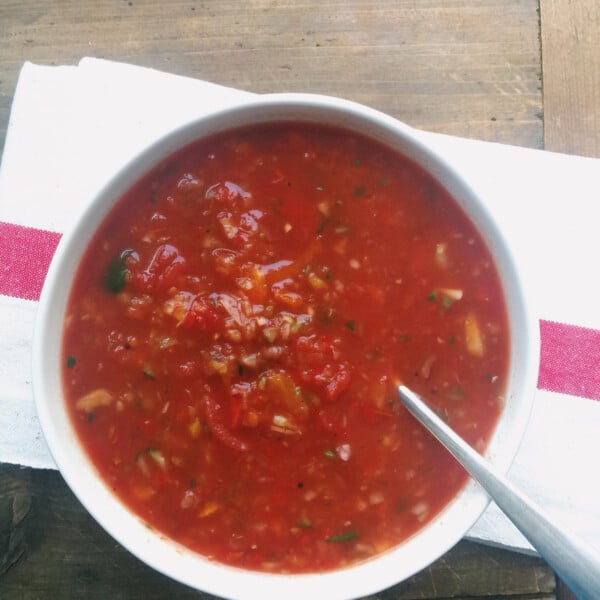
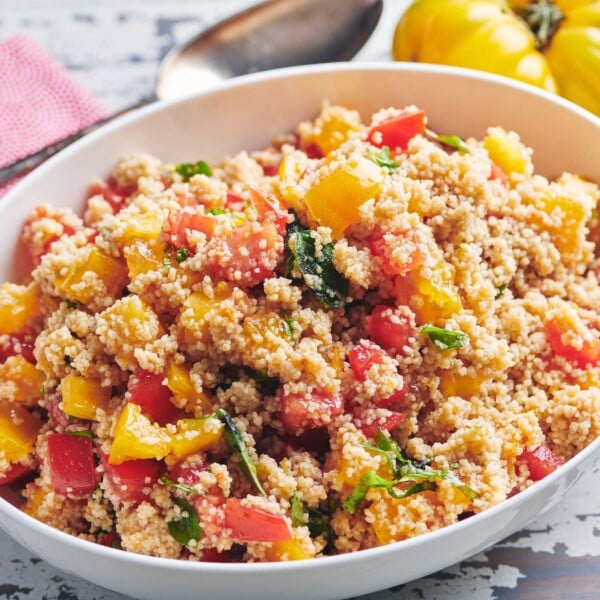

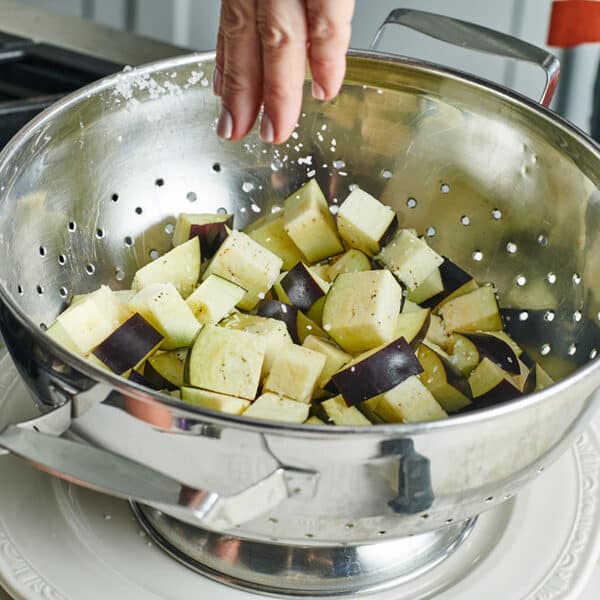
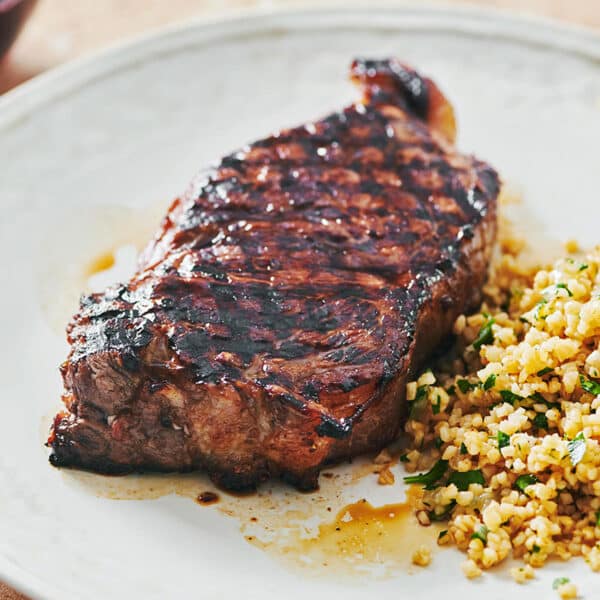

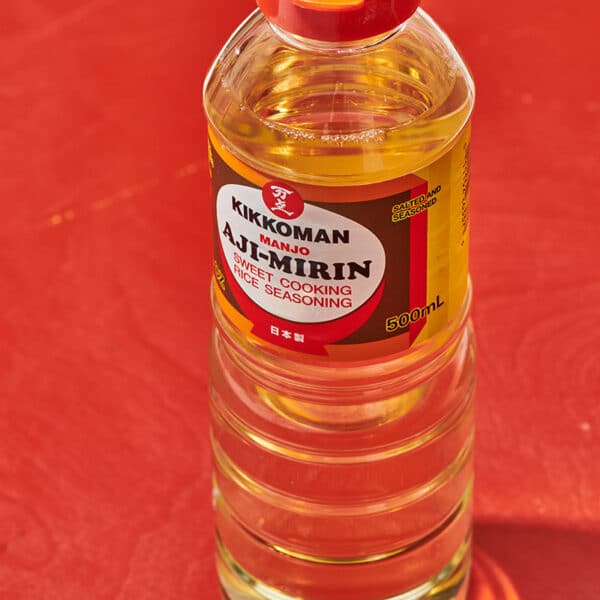









thank you for this useful and different way to adding basil the “chiffonade” way.